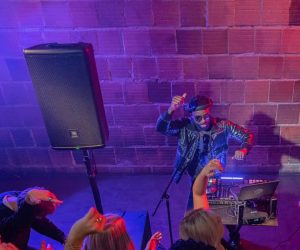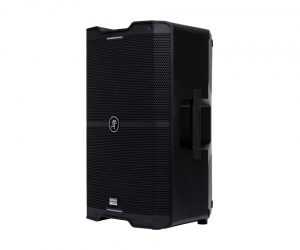
The Professional Voice: Andrew Scheps
The victory of the DAW, and corresponding decimation of the cost of pro audio equipment was one of the main factors behind the collapse of the commercial studio industry. This whirlwind of closing studios, lowering recording budgets, improving digital audio sound quality and endless options and effects at the press of a button, turned the worlds of all engineers, mixers and producers upside down. Throughout this issue, Paul Tingen asks nine of the world’s leading studio practitioners to elaborate on what has changed for them since 1998, homing in on the pieces of gear they consider to have been game changers, and the working methods they use today, which they didn’t in 1998.
ANDREW SCHEPS
Metallica, Red Hot Chili Peppers, Adele, Weezer, Black Sabbath, Audioslave, Linkin Park, Green Day, U2, Johnny Cash, Michael Jackson, Neil Diamond, Iggy Pop.
Scheps works from his own facility in Los Angeles, Punkerpad West, which is an audiophile’s dream, filled to the brim with an astonishing amount of analogue gear, including two Neve 8068 desks, and a Neve BCM-10 sidecar with 1073 preamps. Scheps’ journey has been unusual in that he worked mainly with digital technology in the ’90s and early 2000s, then to a large degree moved back into the analogue domain, and only very recently went back in-the-box again.

Scheps: “In 1998 I was transitioning to going fully in-the-box. Then, when I was working with the Chili Peppers on Stadium Arcadium during 2005 we decided to record and mix entirely on analogue using a Neve. This informed my decision to buy a Neve 8068 console and to return to mixing outside the box. But last summer I went back to working in-the-box. The reason was that I was offered a project to mix just after I had done one of the Mix With The Masters seminars at La Fabrique studios in the south of France. I was still in France, and had the choice of hiring a studio or doing the mixes on my laptop, using the UAD box. I did the first mix on speakers I borrowed from La Fabrique, but I then mixed the rest on headphones, I think they were the Sony MDR7506s. So it wasn’t a sonic decision, but I rediscovered I actually really like working in-the-box. It’s really cool from a creative point of view. It’s great to be able to work on three or four songs at the same time, and also, even when people say they understand what it means to mix on a console, they’ll still call me a week later and will ask for detailed mix changes. So I thought I’d work in-the-box or on my desk depending on the project.
GAME CHANGERS
PRO TOOLS IMPROVEMENTS,
APHEX 204,
EURORACK MODULAR FORMAT
The Eurorack modular format… has rekindled my interest in exploring sound for sound’s sake
“I actually spent some time talking with Tchad Blake about working in-the-box, and realised that if he, the ultimate analogue effects guy, can do it, then I don’t have any excuses. I have in recent months mixed many albums in-the-box, including by Ziggy Marley and Rodrigo y Gabriela, and I think they sound amazing. The good part is they sound like I mixed them. I’m setting up my in-the-box mixes to emulate the way I used to do them on the console. I am sometimes exactly recreating my hardware chains with plug-ins. It’s really stupid: all the faders on my desks are down, and the laptop is just sitting on top. I still have a bunch of outboard patched into my Avid HD I/O, most importantly a pair of Universal Audio 1176s, the Aphex 204, and the Moog Analogue Series 500 delay, but mostly on stuff I don’t need to do recalls on. I only use a single-fader controller, the Frontier Designs Alpha Track, because I don’t like the new controllers, I can’t tell quickly enough what tracks I’m looking at. I use that one fader for all my rides because I don’t like using a mouse for the automation. I still like to ride each instrument as a performance, as I used to do on the desk. But for the rest it’s all keyboard and mouse. I thought it’d be a difficult transition, but it turns out that it wasn’t.
“Regarding the three most important new developments in gear, the progression of ProTools has to be one of them. I can’t point to one particular revision that really made the difference. It’s just continually been getting better and more powerful. The Aphex 204 Aural Exciter and Big Bottom came out 10 or so years ago, and it’s absolute magic, particularly on the toms. Nothing else comes even close and the plug-ins that are supposed to do the same thing don’t sound anything like it. It does this one really specific, weird thing. The Eurorack modular format is also really great, because so many companies are making so many crazy processing devices for it that I now have a 30 space rack full of modules that allow me to do anything I want to do, manual phasing, wave folding, crazy filters, whatever. It has rekindled my interest in exploring sound for sound’s sake. As for new working methods, I have gone much further with parallel mixing than I did in 1998. Today parallel compression is at the core of almost everything I do. I almost never use an insert anymore, except for basic EQ. I add excitement in a mix by using lots of different combinations of parallel compression.”
















RESPONSES